Introduction
- This is a staff and parental evaluation or assessment resources project for special needs’ children and families in California.
- California’s special education schools provide students the unique opportunities for learners with disabilities.
- Available resources allow students to learn and thrive in classes and several extracurricular activities.
Learners who were held by their disabilities have found such resources to be extremely useful for overcoming learning disorders.
Students’ resources may focus on individuals’ needs.
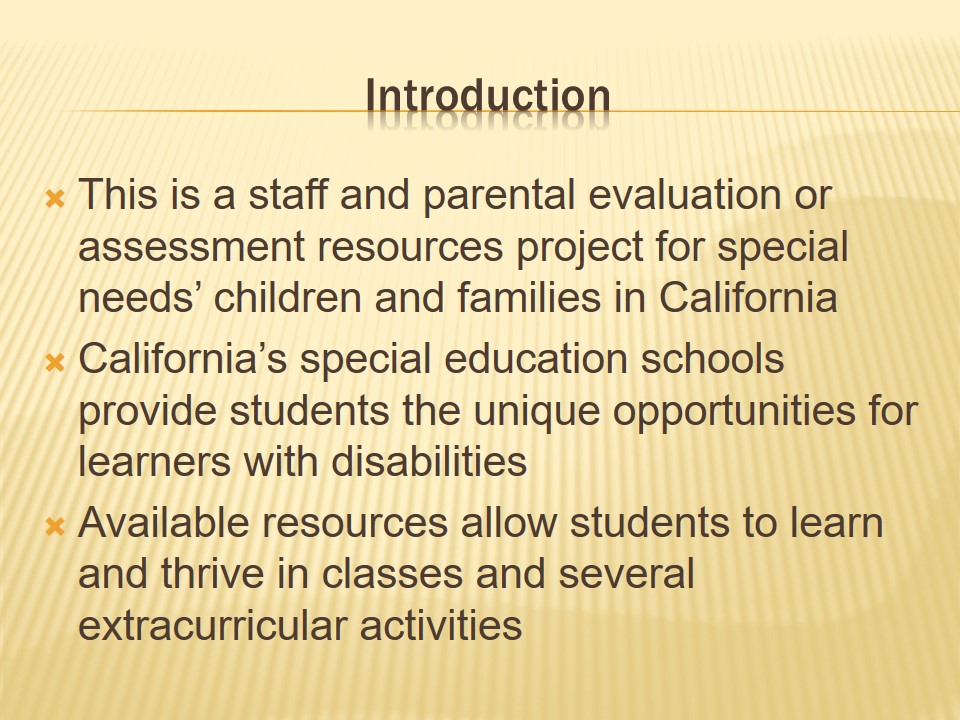
Procedural Safeguards for Parents
- Procedural safeguards are core parts of IDEA’s requirements (California Department of Education, 2009).
- They act as guarantees for parents and their children with disabilities.
- They offer both school and parents a variety of options for resolving any conflicts.
- Parent access to student records.
- Parent rights to ask that those records be amended.
- Parent rights to participate in groups and meetings where decisions are made about their child’s education.
- Parent written notification requirements.
- Preferred evaluation methods (Zirkel & McGuire, 2010).
- Schools may wish to evaluate children with disability upon providing reasonable written notice to parents (Zirkel, 2010).
Schools can:
- Evaluate learners.
- Determine eligibility for special education.
- Review evaluation and placement plans.
- Reject evaluation requests from parents.
The Federal Law under IDEA requires schools to give parents Procedural Safeguards Notice.
The written document allows parents to understand their legal rights to ensure that their children get the services that they require.
Parents, legal guardians, and surrogate parents of children with disabilities have educational rights or procedural safeguards (Zirkel & McGuire, 2010).
The Federal IDEA Law facilitates parental involvement in their children’s evaluation processes with the aim of promoting special education services.
It provides both parental and children’s rights and protects those rights.
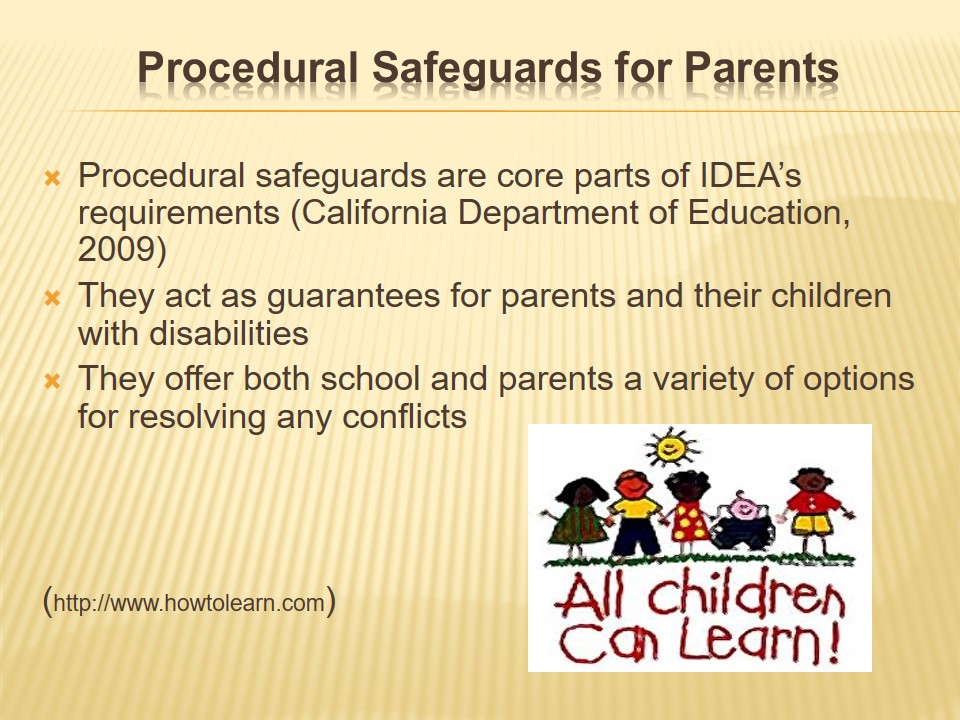
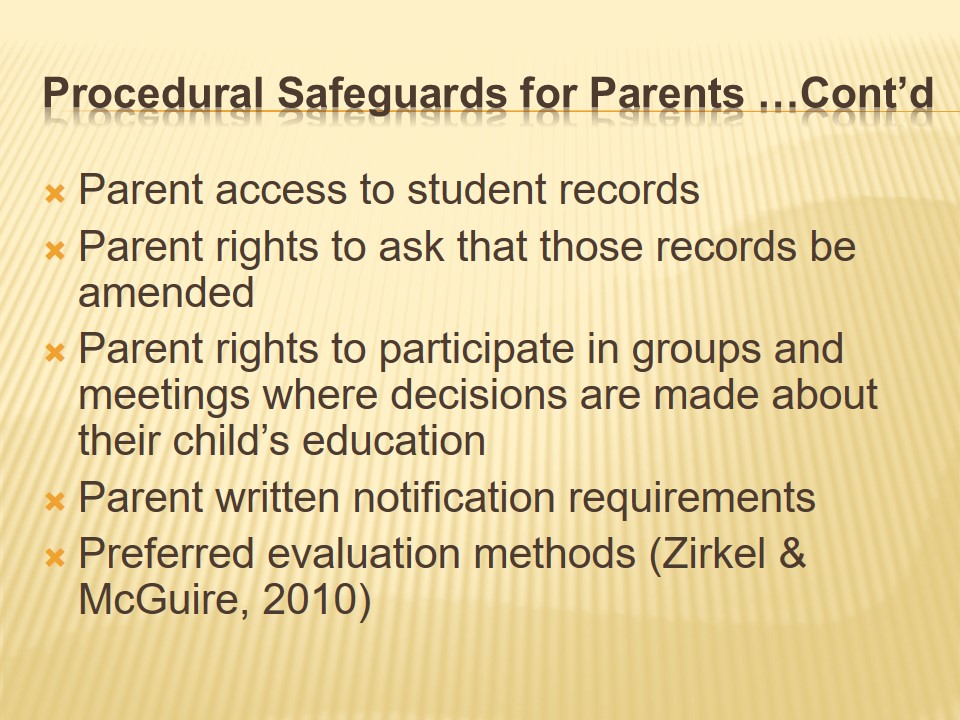
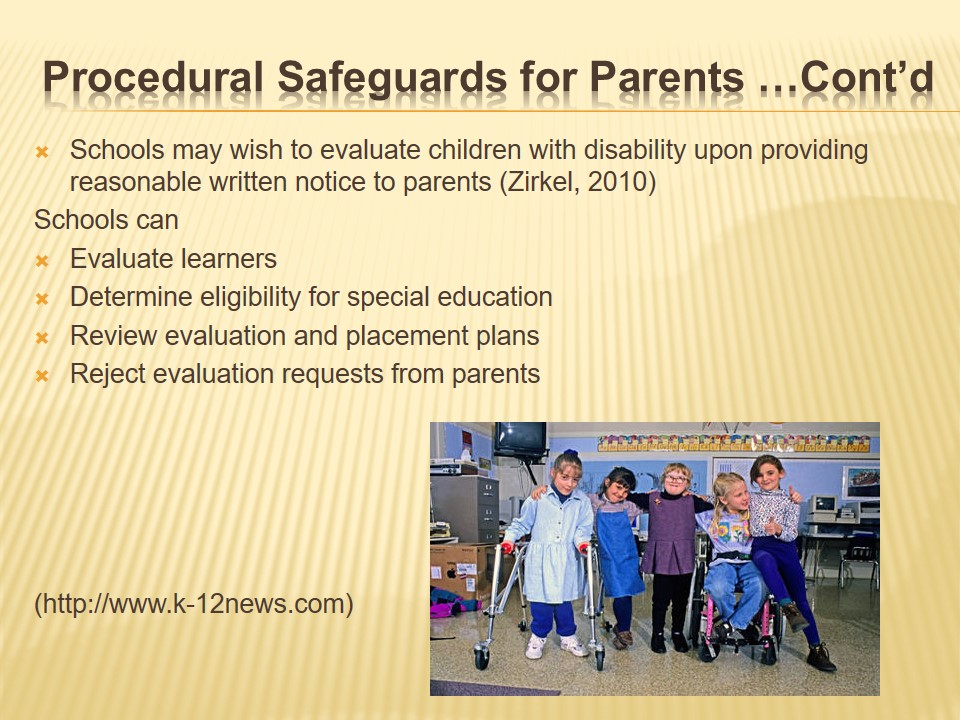
Resources and Supports Available to Parents and Teachers in California
- Availability of resources and support depends on the needs of learners with disabilities.
- Resources and supports allow parents and teachers to work together on behalf of special needs children.
- They encourage parents and teachers to take active roles in the education of children.
- They promote awareness and communication to improve opportunities for children, Parents and teachers.
Available resources and supports focus on:
- Autism (Central Coast Autism Spectrum Center, n.d).
- Medical case management or treatment.
- Social and recreational programs.
- Assistive technologies.
- Home support services.
- Peer counseling and techniques for coping and referral.
- Early Start Program for children under age 3.
Coping with a learning disability is a constant struggle for the special needs students, parents, and teachers. Consequently, there are resources and support available to parents and teachers. These resources and supports aim to reduce levels of difficulties and enhance coping.
Children with learning disabilities have diverse difficulties that affect their learning processes. As a result, California provides different resources and supports for special needs children, parents and their teachers.
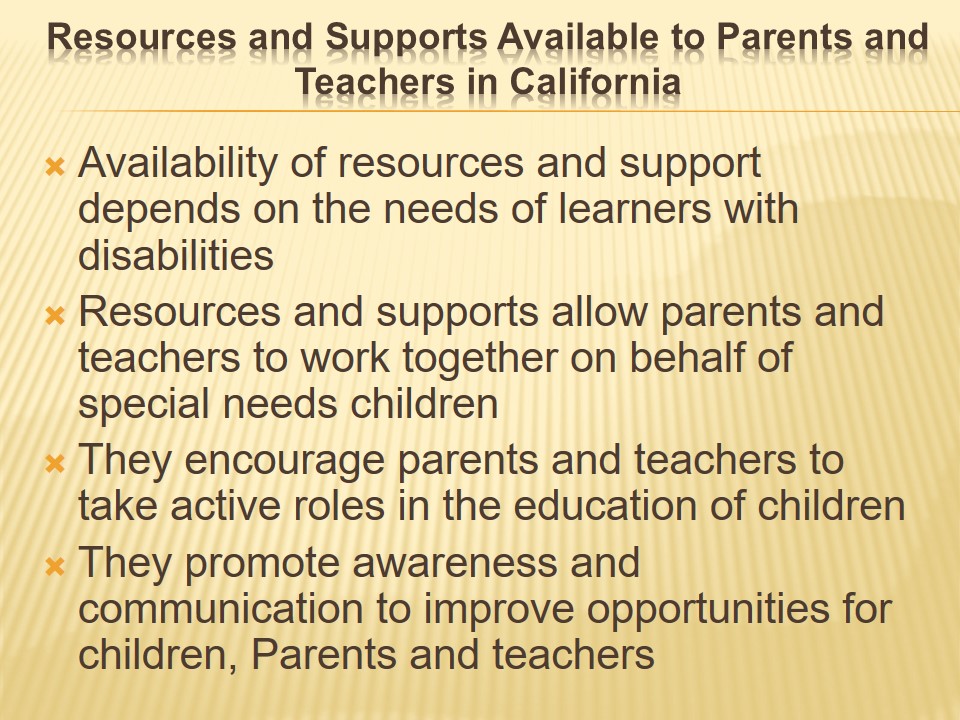
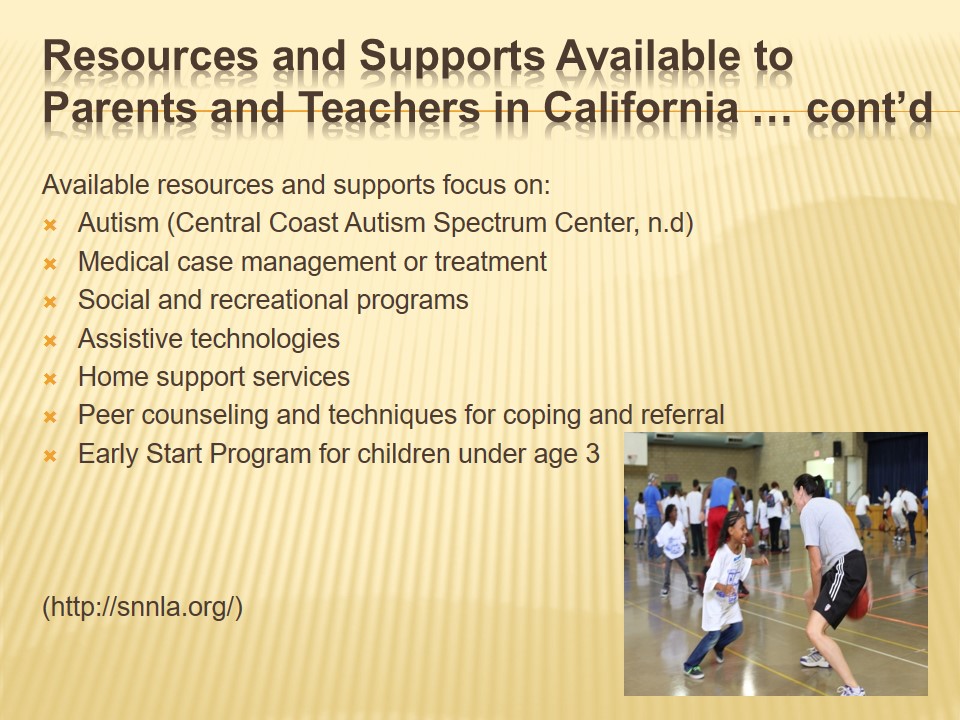
Bibliography of Local and State Resources
- Parents Helping Parents California (PHP ) – a multifaceted, comprehensive Parent Directed Family Resource Center for children with any kind of special need (mental, physical, emotional, or learning disabilities.
- Autism Parent Support Group ‐ Central County.
It offers opportunities to network and socialize with other parents, grandparents and guardians.
- California Children’s Services offers medical case management or treatment to children with various conditions.
- Camp Expedition promotes the creation of social and recreational programs designed to meet unique needs of special children.
- Central Coast Assistive Technology Center loans assistive devices to determine their effectiveness for later funding.
- In Home Supportive Services (IHSS) offers services for disabled children and adults.
- Tri‐Counties Regional Center specializes in Early Start Program for children under age 3 who require speech, occupational or physical therapy, developmental monitoring and consultation.
California has several local and state resources to provide services to special needs children, parents and teachers. These resources focus on different difficulties and offer various interventions for children, parents and teachers.
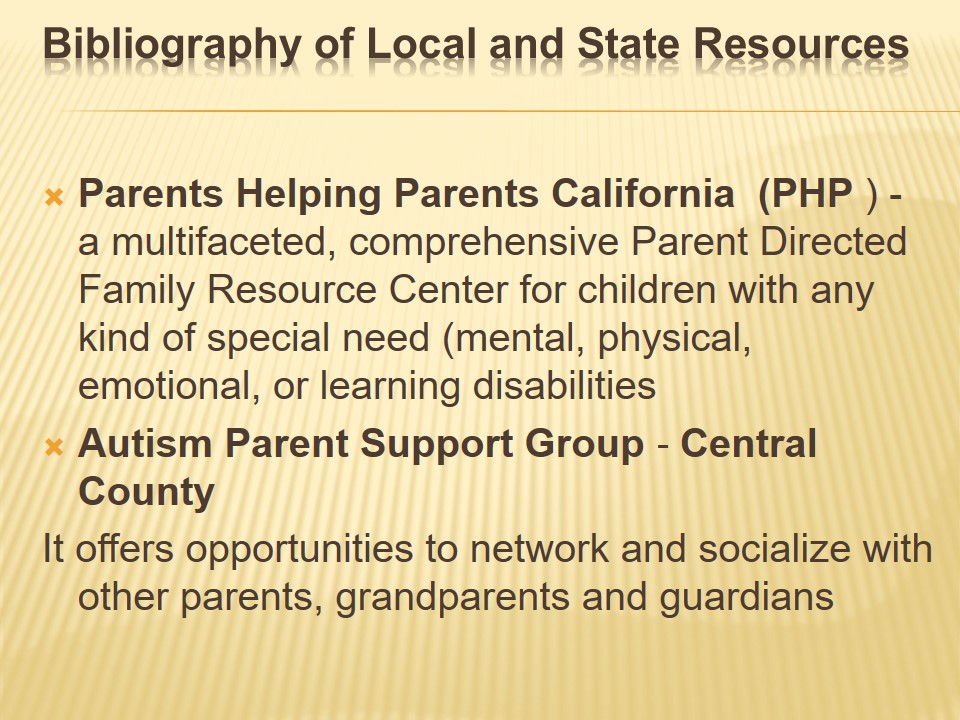
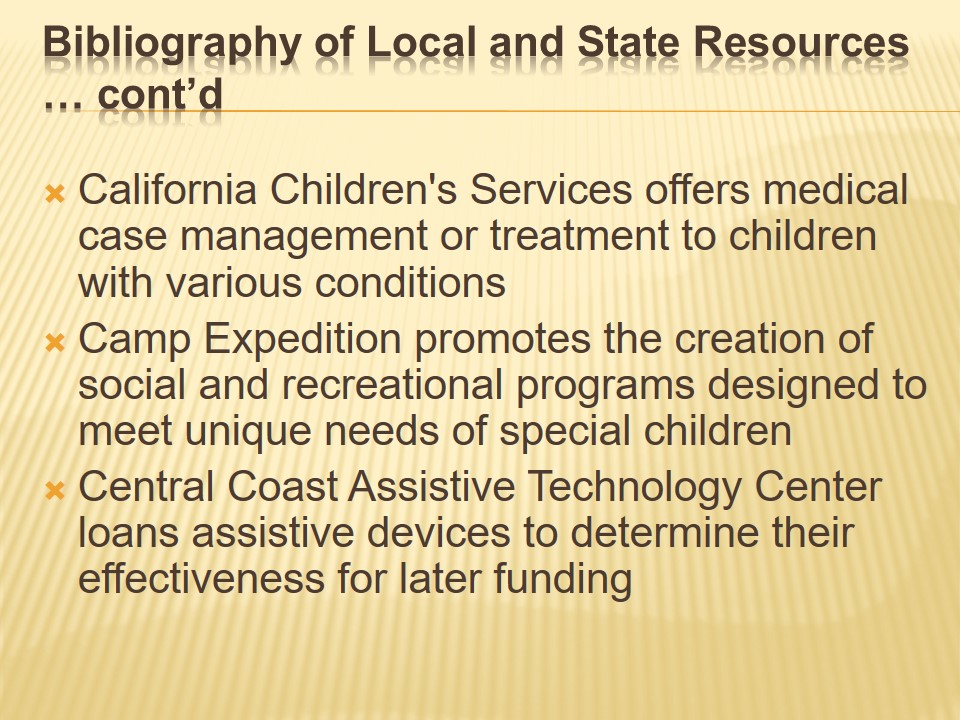
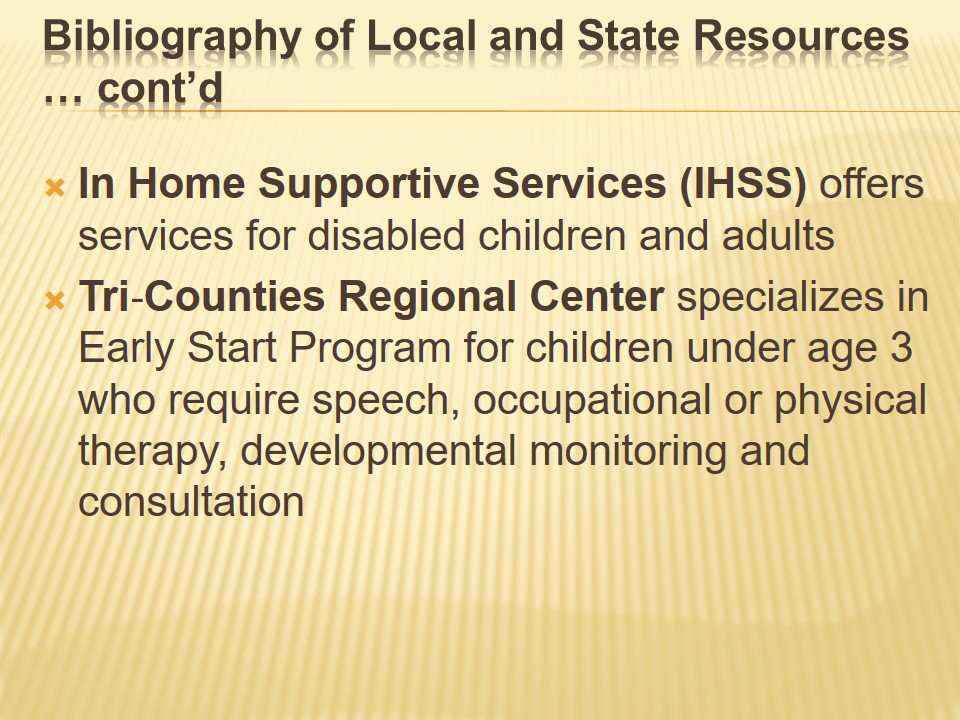
Conclusion
- Procedural safeguards are core parts of IDEA’s requirements.
- They guarantee parents’ legal rights when schools need to evaluate special needs children.
- California adheres to these procedural safeguards.
- It has several resources and supports for children, parents and teachers.
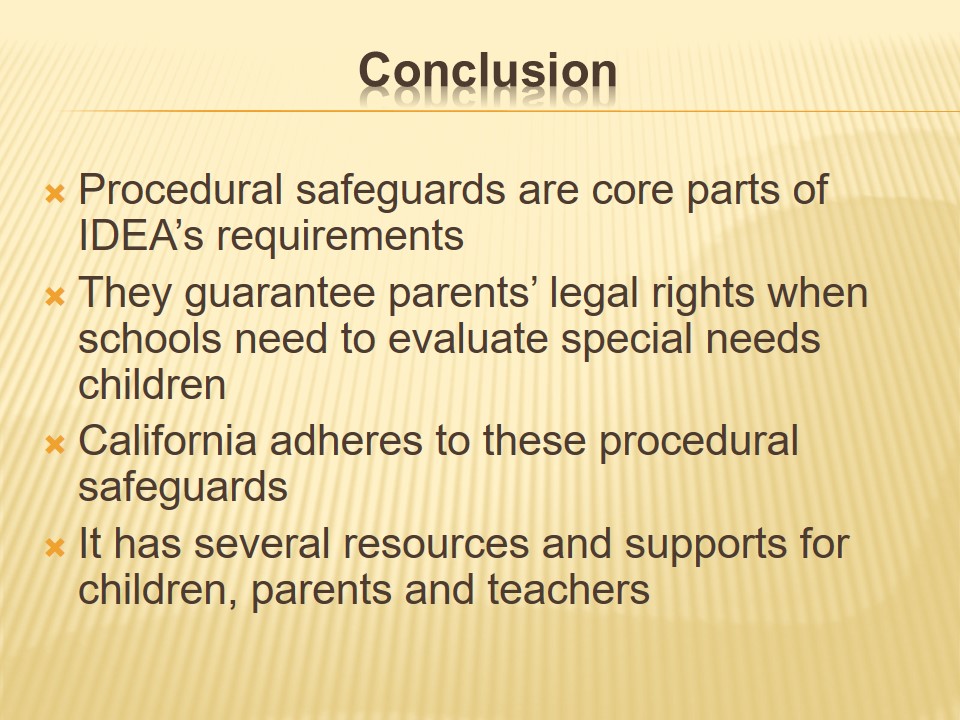
References
California Department of Education. (2009). Notice of Procedural Safeguards. Web.
Central Coast Autism Spectrum Center. (n.d). Parent Resources for Special Needs Children. Web.
Zirkel, P. (2010). The legal meaning of specific learning disability for special education eligibility. Teaching Exceptional Children, 42(5), 62-67.
Zirkel, P., & McGuire, B. (2010). A roadmap to legal dispute resolution for students with disabilities. Journal of Special Education Leadership, 23(2), 100-112.